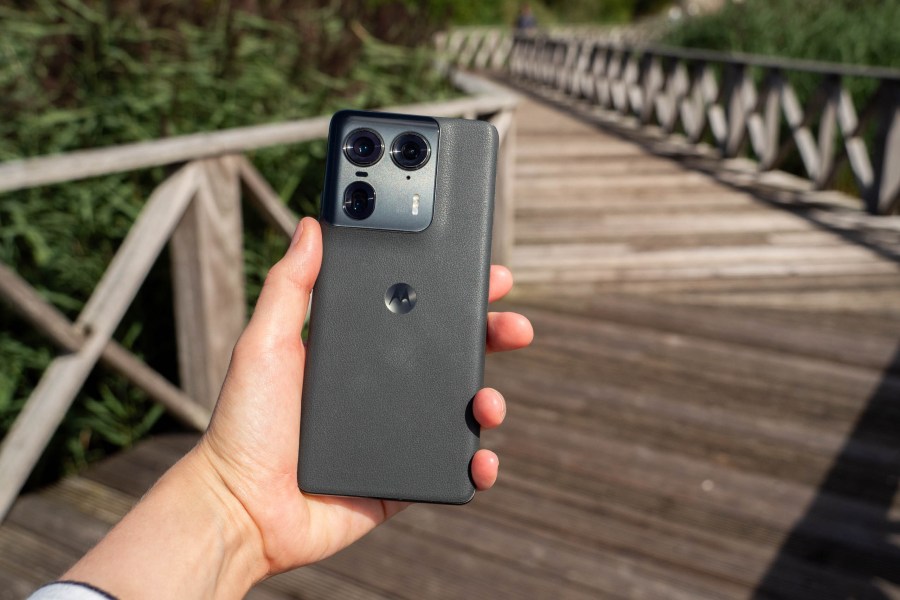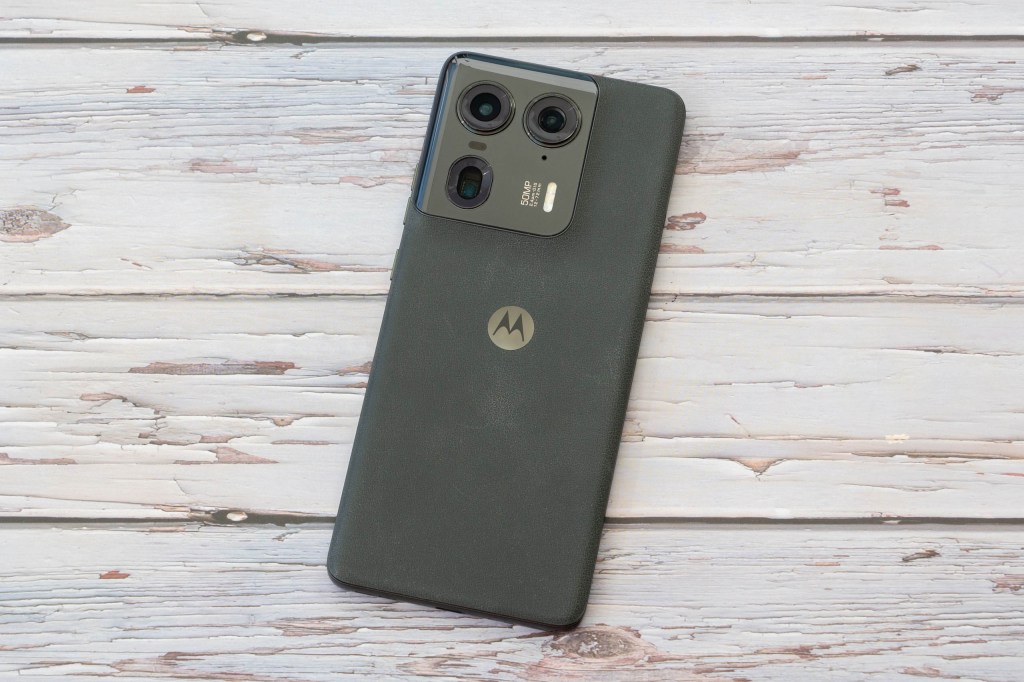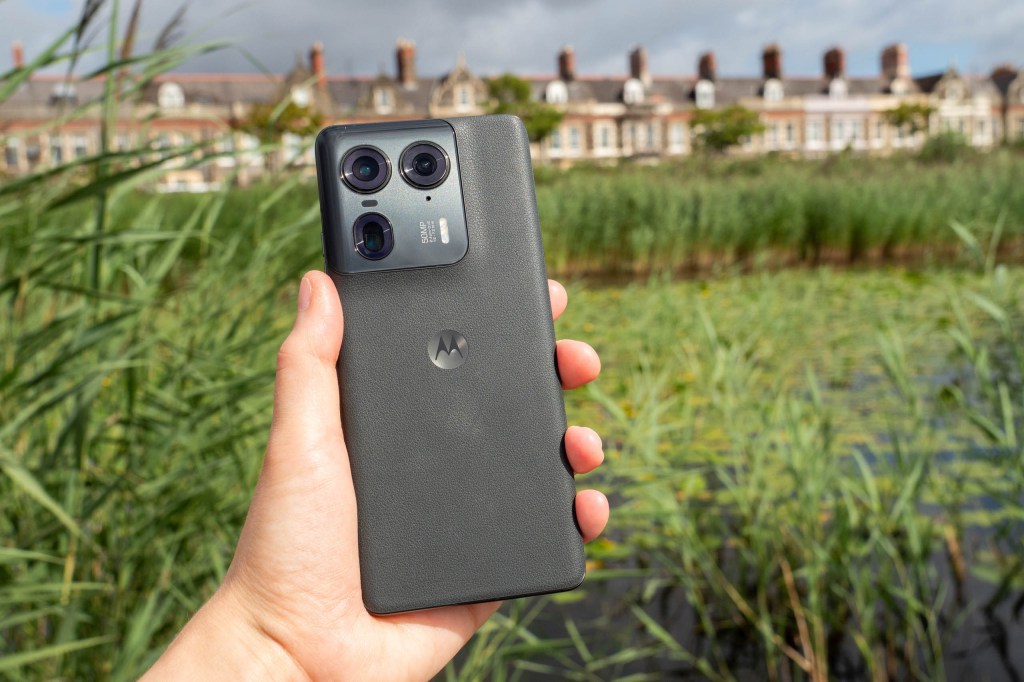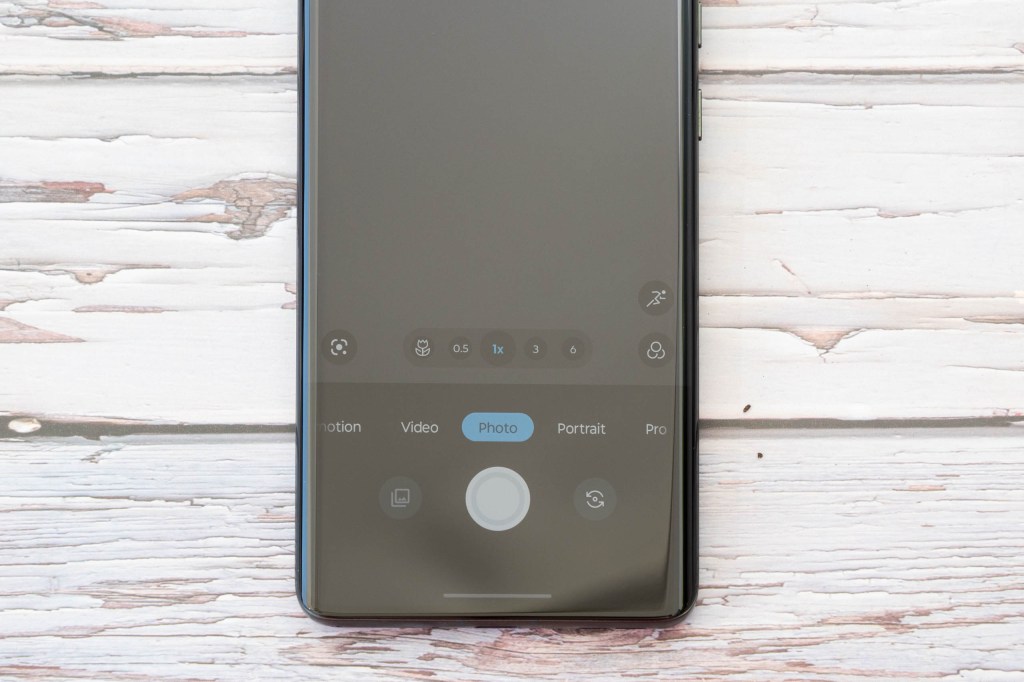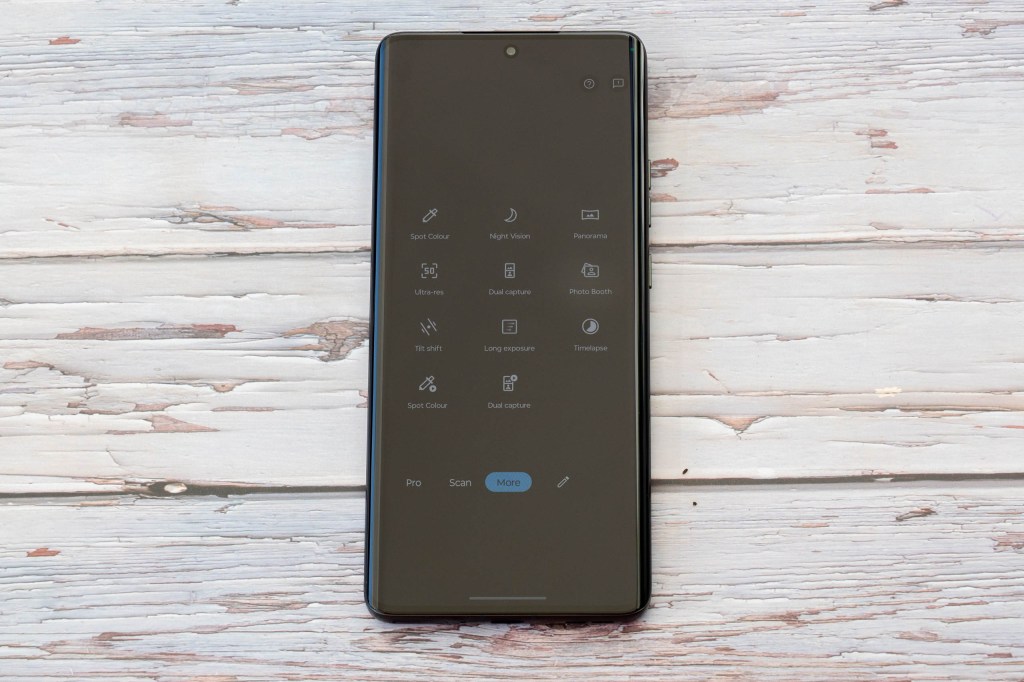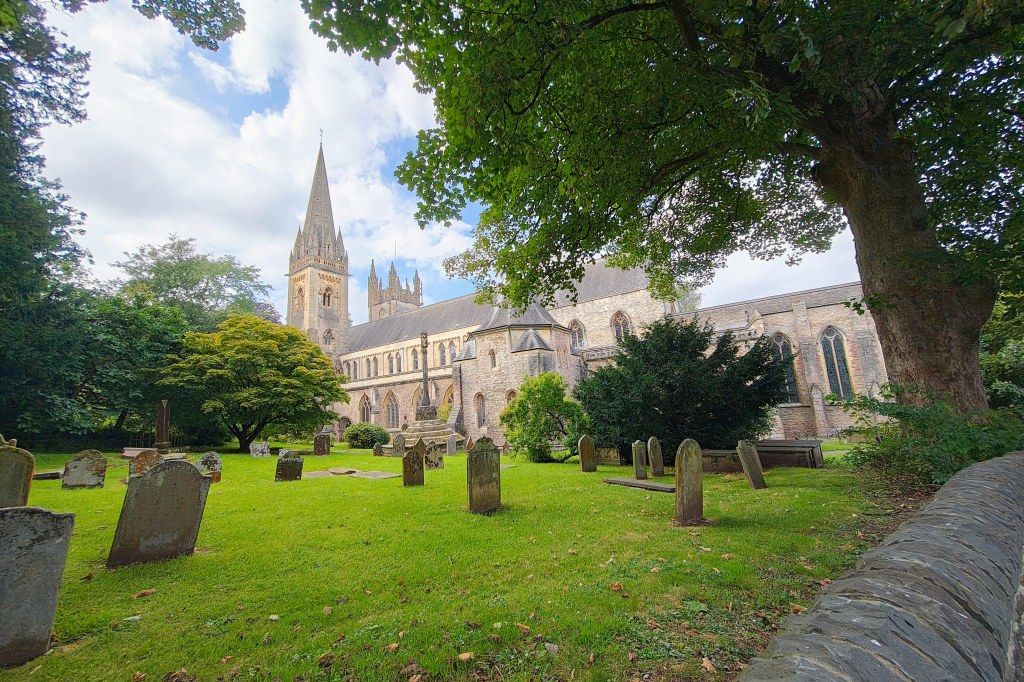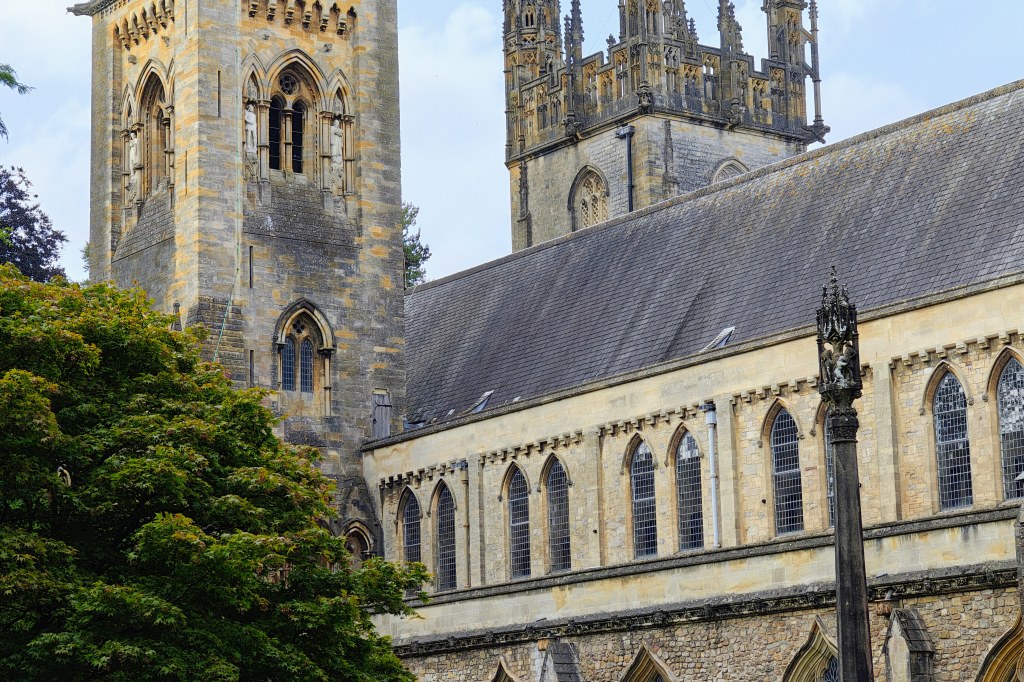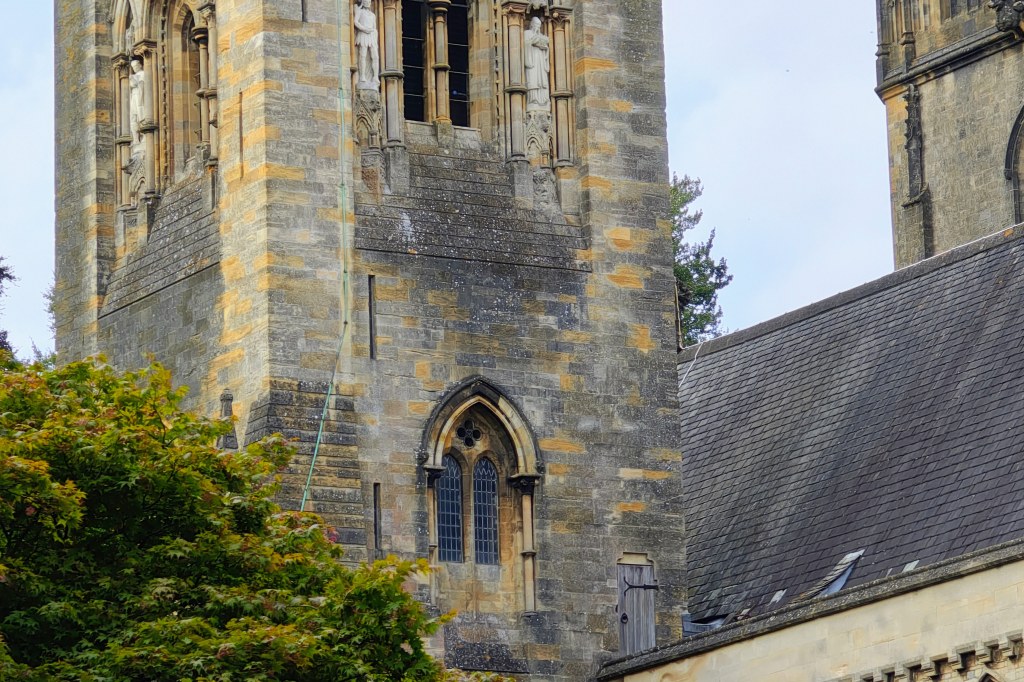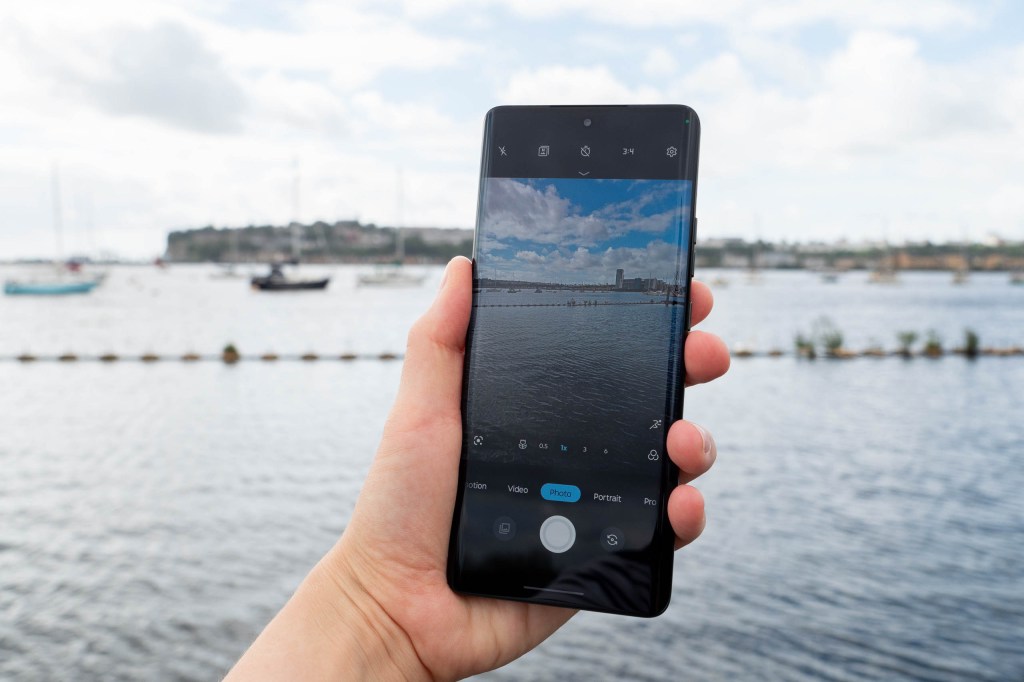Amateur Photographer verdict
If you don’t want to spend a fortune on a big-name flagship, then this Motorola offers comparable camera specs. If you’re prepared to compromise on the screen, then you’ll get yourself a bargain.- 1TB internal storage
- 3x high-resolution rear sensors
- High-resolution selfie camera
- Limited updates guaranteed
- Curved screen
Some of the best smartphones for photographers will set you back a small fortune, so when something clocks in at a more affordable price, we’re bound to take notice.
Although by no means cheap, the Motorola Edge 50 Ultra appears to have comparable specs to the likes of the Samsung Galaxy S24 Ultra, Google Pixel 9 Pro XL and iPhone 15 Pro Max – but can it live up to the same kind of image quality?
Right now, it costs around £649* for a 1TB storage device. In the UK just now, that’s half the price of some big name flagships with comparable storage capacity. * patchy availability in the US.
Motorola Edge 50 Ultra at a glance:
- 50MP 1/1.3-inch main sensor with f/1.6 lens, OIS
- 50MP ultrawide 12mm f/2.0
- 64MP 3x telephoto 72mm f/2.4, OIS
- 50MP f/1.9 selfie camera, with AF
- 4K 60fps video
- 6.7” 2712 x 1220 pixel P-OLED screen, 120Hz, 2800 nits peak brightness
- 4500 mAh battery
- 125W turbo power charging
- 1TB internal storage
- Processor: Snapdragon 8s Gen 3 Mobile Platform
How we test phones
We review smartphones from the perspective of choosing one for its photography and camera performance. We look at what the Motorola Edge 50 Ultra offers, and the features included for photography and video, paying particular attention to the cameras on the phone, photo editing capabilities, and the output from each different lens.
Motorola Edge 50 Ultra – Features
The Edge 50 Ultra has a triple-lens array, which is pretty much ‘the norm’ for mid-range and high-end phones at the moment. What’s less common however is that all three of the sensors offer high resolution, with two at 50MP (the main and the ultrawide) and a third at 64MP (the telephoto). Interestingly, there’s also a 50MP selfie camera on the front of the phone too – it’s also pretty rare to have high-resolution front-facing cameras.
With a 23mm f/1.6 lens, the main camera is backed by a fairly large 1/1.3-inch sensor. The ultrawide lens has an equivalent 12mm f/2.0, while the 3x telephoto gives a 72mm f/2.4 equivalent. As is pretty common, the ultrawide lens is also used for close-up worked, named “macro vision” by Motorola.
4K video up to 60fps is available. There’s no 8K like you might find with a Samsung Galaxy S24 Ultra, but very few people actually need that right now, so that’s to be expected.
As is fairly common now, there’s a host of AI functions for the Edge 50 Ultra which are designed to enhance your photography. That includes being able to capture light trails in the phone, better auto focus tracking for moving subjects and enhanced processing.
Another intriguing feature of the Edge 50 Ultra is the fact that it has Pantone validation. This is the world’s first smartphone to be validated by the famous colour experts, with it promising to produce excellent, accurate colours and skin tones. That’s both for the cameras and the display of the phone.
Speaking of the display, you get a 6.7inch screen with 2800 nits peak brightness and a resolution of 2712 x 1220pixels. That makes it less detailed than the Samsung Galaxy S24 Ultra, while it also doesn’t have an anti-reflective screen nor an “Always-On” display. Considering this retails for such a lot less than the S24 Ultra though, that’s not a surprise and is clearly where (some) of the compromises are to be found.
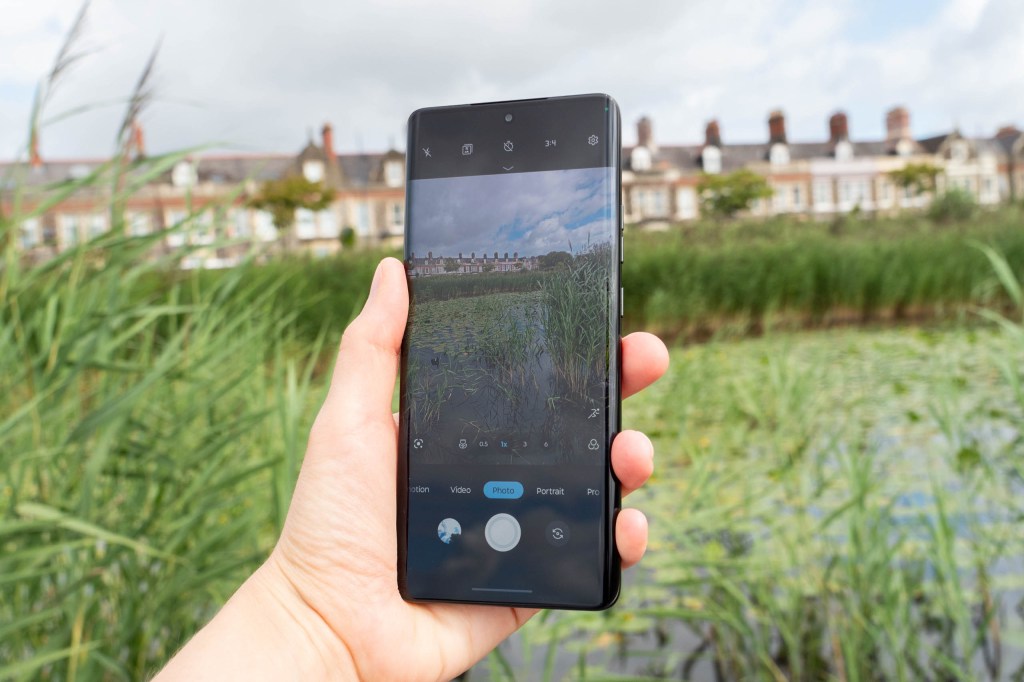
The battery is slightly smaller than that which we’d find in many flagships, being 4500mAh, but, there’s super fast 125W charging and wireless charging available. Plus, with a less powerful screen, it’s likely to last as long as those with higher powered units anyway. A fast charger is also included in the box which is a big pro these days.
In terms of updates, Motorola guarantees at least three major OS updates, and four years of security updates. That’s not as good as the likes of Samsung, iPhone or Pixel, but, it’s better than some others on the market, and is a pretty fair reflection of how long most people actually keep their phone for.
Motorola Edge 50 Ultra – Handling and Design
The Motorola Edge 50 Ultra employs a curved screen, which is starting to fall out of fashion now, with many others now using a flat design. Still, if you like curved edges then you’ll likely be happy with the phone’s design. The screen itself uses Corning Gorilla Glass Victus so it should withstand scratches quite well. The phone is also IP68 dust and waterproof.
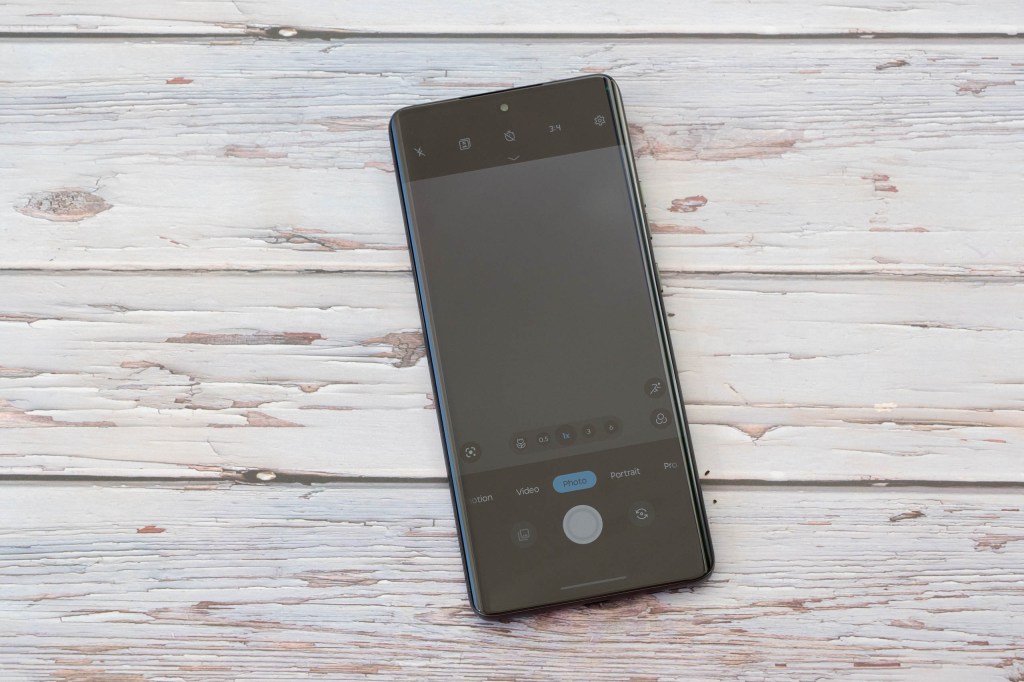
I’ve been using the “Forest Grey” vegan leather version of the phone, which gives the back of the phone a matte feel. It also feels more sturdy and like you wouldn’t necessarily need to invest in a case for the phone. It doesn’t attract fingerprints, but it can get a little bit grubby.
The cameras are arranged on the back in a pretty standard formation of two cameras on top of the third one. The lenses themselves are quite big and look a little similar to those seen on an iPhone.
Unlike many other Android phones, the Motorola Edge 40 Ultra uses a “clean” version of Android, making it fairly similar to using a Pixel phone. It’s a great overall experience to use. In order to launch the native camera app you can double tap the power button on the right hand side of the phone, while the volume keys can be used to take pictures.
Motorola Edge 50 Ultra – Native camera app
The native camera app for the Edge 50 Ultra is pretty similar to other Android smartphones. It’s well-featured, with lots to choose from whether you want to keep things simple or explore more advanced options.
By default, the app will launch in the Photo mode, which most people will probably use to take the majority of their shots. With this, you can access the 0.5 lens, 1x and 3x, as well as having an on-screen button for 6x in-sensor cropping. You can also pinch to zoom up to 100x digital zoom – the same as we see on the Samsung Galaxy S24 Ultra.
You can either set the phone to automatically switch to macro mode by bringing it closer to the subject, or tap a little flower icon to enable it. At this point, the phone will switch to the ultrawide lens, but apply a crop to recreate the look of shooting with a 1x lens.
In this mode you can switch on “Auto-enhance”, which applies settings to your photos, but it can take longer to capture the shot. You can opt to leave it as “Natural” as well. In my experience, switching it on doesn’t lead to dramatically longer shooting times – in fact I don’t think most people would notice a difference in shooting. Additionally, you can also switch on “Shot optimisation” in the settings menu, which uses AI scene detection to enhance photos, too.
Like most smartphones, there’s a Portrait mode. However, a small difference here is that the different focal length options are displayed as 24mm, 35mm, 50mm and 85mm, rather than 1x, 2x and so on. If you tap an “f” button, you can change the simulated aperture – but bizarrely considering it uses “real” lens terminology for the focal length, the aperture slider goes from 1 to 6, to indicate the strength of the background blur. You can also adjust the focus point and the level of blur after the fact by tapping “Edit” when viewing your images in playback.
A Pro mode gives you the option to change various settings include ISO, exposure compensation and white balance. It’s here that you can also shoot in raw format if you feel so inclined.
Some other shooting modes include Night Vision (which you can either select from the More menu, or it should automatically activate upon detection of low light), Timelapse, Panorama, Ultra-Res (for shooting at the full 50MP resolution) and Tilt Shift (for recreating the look of using a tilt-shift lens).
When it comes to editing your shots, it’s also worth noting that the Edge 50 Ultra uses some of the same editing tools as the Google Pixel series, including Magic Eraser, which allows you to move things around the scene, or erase them entirely.
Motorola Edge 50 Ultra – Image Quality and Performance
The Edge 50 Ultra is capable of taking some great shots, with all three of the lenses putting in a pleasing performance when light levels are good. There’s plenty of detail on display, and I’d certainly say the shots are comparable to those from the Samsung Galaxy S24 Ultra or iPhone 15 Pro Max.

Colours, which remember are Pantone validated, are very good on the whole, mostly appearing on the right side of vibrant without going overboard with the saturation – something I see happening a lot, especially with mid-range or cheaper phones. There were some occasions in very bright weather with lots of green in the scene that things went a bit dazzling, but generally the results are very good. Skin tones also seem to be pretty accurate too.
Digital zooming is pretty good at the 6x option as displayed in the camera app, and even produces usable results up to around 15x. The 100x results, as I’d expect, are pretty terrible – just like every smartphone which offers this. It’s obviously a marketing gimmick to help compare it to the other flagships on the market, so I’d probably pretend that doesn’t exist.
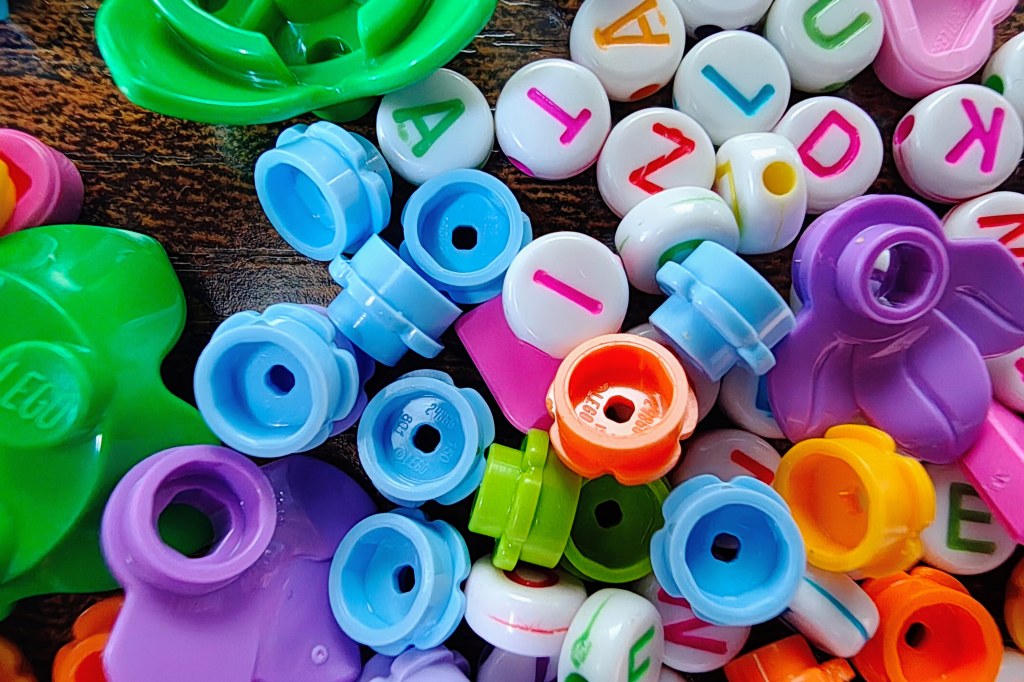
The macro mode is neither the best on the market nor the worst. Using the ultrawide camera means you have to get practically on top of your subject, which can mean blocking out otherwise available light. The results here are similar to what I’d expect from the Samsung Galaxy S24 Ultra or the iPhone 15 Pro Max however, and it works quite well for certain subjects. If you’re only looking at shots on your phone screen, they’re certainly good enough. The best macro on phones these days comes via the floating telephoto options like we see on the Xiaomi 14 Ultra or the Vivo X100 Pro, if that’s your thing.

Portrait mode again puts in a reasonable performance. I like the fact that you can adjust the background blur and the focus point after the fact if you feel it hasn’t quite got it right. Outlines don’t look all too natural if you have the heaviest amount of blur on, but look a bit better if you tone that down.

The selfie camera features auto focus (AF), and creates highly detailed shots – arguably perhaps a little too detailed – and being able to mix it with the Portrait mode means you can get some nice shallow depth of field effects.
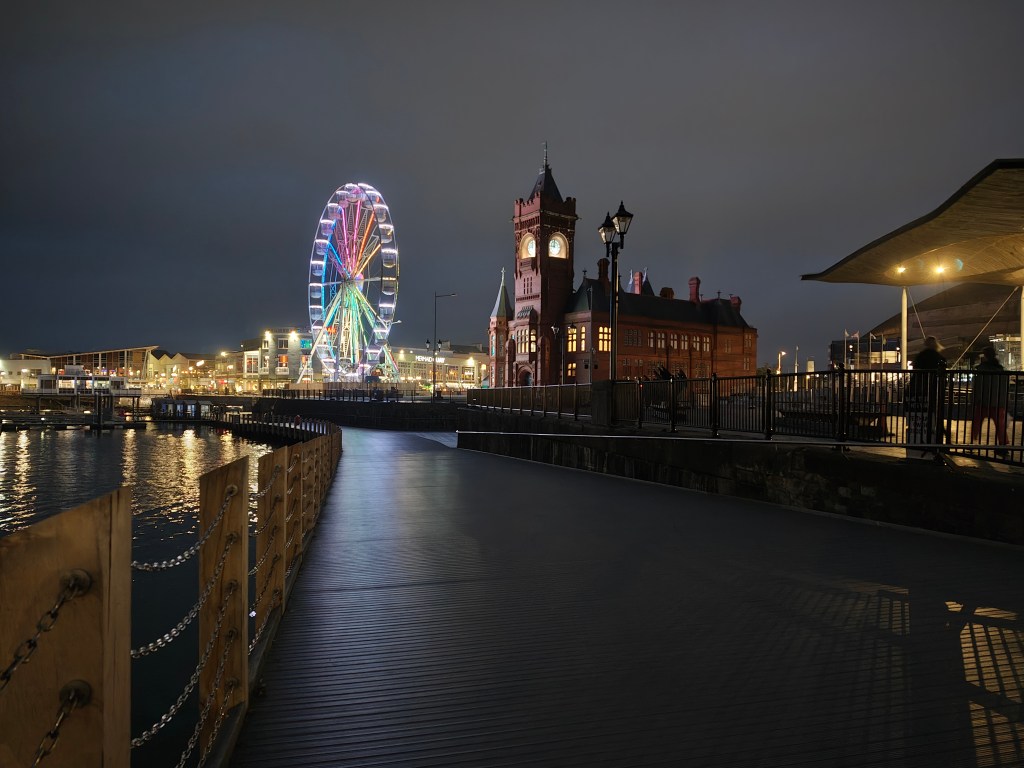
In low light, the best results come from the 1x camera – pretty standard fare for smartphones. That said, the ultrawide images are not too bad either, and the 3x option is just about usable at small sizes.
Switching off the “shot optimisation” doesn’t seem to be a good idea – I found with it switched off, the quality of images reduced, with some strange colours – so it’s wise to leave it on. Auto enhance produces some nice pictures – but in all honesty, the difference with it on or off is very subtle, so I wouldn’t say it’s a necessity.
4K video recording is fairly detailed and has a balanced exposure. It’s also fairly stable and steady if you’re recording handheld.
Motorola Edge 50 Ultra – Value for Money
At £649 in the UK, the Edge 50 Ultra sits in the middle price range. However, when you compare it to the likes of the big flagships at the moment, it’s very competitively priced.
That’s especially true when we think about how much storage you get for your cash with the Edge 50 Ultra. If you look compare it to the 1TB versions of the iPhone 15 Pro Max (£1,599), the Samsung Galaxy S24 Ultra (£1,449) or the Pixel 9 Pro XL (£1,549), then £849 starts to look like an absolute bargain.
There are a couple of caveats to add here. The Motorola Edge 50 Ultra certainly is cheaper than those models, but there are some compromises to be made. Mostly those compromises seem to come from non-photography related issues though, such as the screen. So, if you’re looking for a good camera but can skimp elsewhere, it might be worth considering.
Additionally, when it comes to resale when you want to upgrade, a Motorola is unlikely to hold its value as well as a Samsung or an iPhone. So you’ll be saving money now, but down the road you won’t be – the house always wins, one way or another. It’s also worth remembering you don’t get as many years’ worth of security or OS updates as with Google, Apple or Samsung either.
Motorola Edge 50 Ultra – Verdict
There’s a lot to like about the Motorola Edge 50 Ultra, with it putting in an extremely strong performance for the price point. It compares well with the Samsung Galaxy S24 Ultra, with the compromises generally coming from specifications that aren’t strictly directly related to the quality of the onboard camera, such as to the screen.
The best results come from the 1x lens, but the others also put in a very good performance too, making this a great all-rounder. I’ve seen better macro options elsewhere, but the pictures are reasonable enough for ordinary usage, but portraits and low light are a bit more impressive.
So, in answer to the question – is the Motorola Edge 50 Ultra as good as a Samsung flagship – well, it’s a definite maybe. In terms of the camera, it comes pretty close, so if you’re happy with compromises elsewhere it’s certainly one to consider, particularly if you want to save a bit of cash.

Specifications
| Wide camera | 50MP 1/1.3-inch sensor, f/1.6 lens, Laser AF, OIS |
| Ultrawide camera | 50MP 12mm f/2.0 equivalent lens, AF |
| Telephoto camera | 64MP 72mm f/2.4 equivalent periscope lens, OIS, PDAF |
| Front selfie camera | 50MP f/1.9 wide lens, AF |
| Display | 6.7-inch Super HD (2712 x 1220 pixels), 446 ppi, 120Hz, 2800 nits peak brightness |
| Operating system | Android 14 |
| Dimensions | 161.09 x 72.38 x 8.59mm |
| Weight | 197g |
Related reading:
- Motorola Edge 50 Pro review: quality middle ground?
- Motorola launches Razr 50 and Razr 50 Ultra flip phones
- Motorola Edge 50 Neo announced with improved low light capabilities
Follow AP on Facebook, Twitter, Instagram, YouTube and TikTok.

